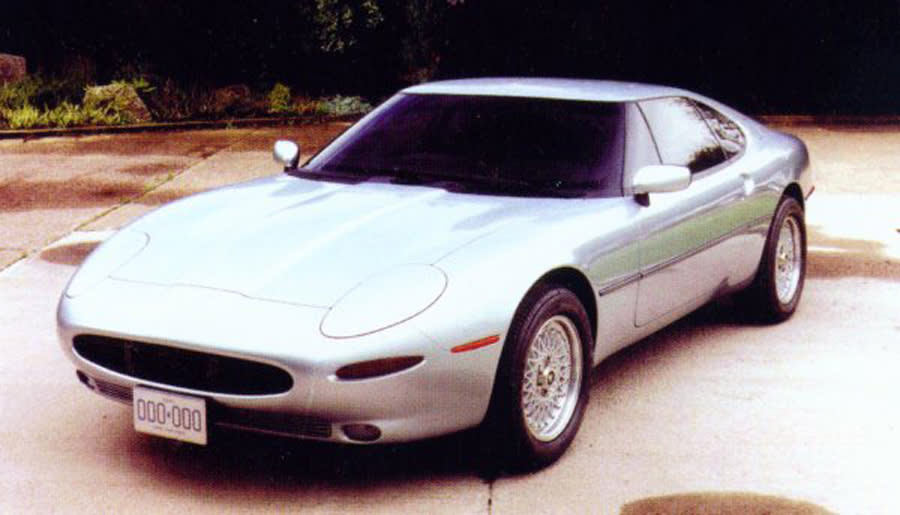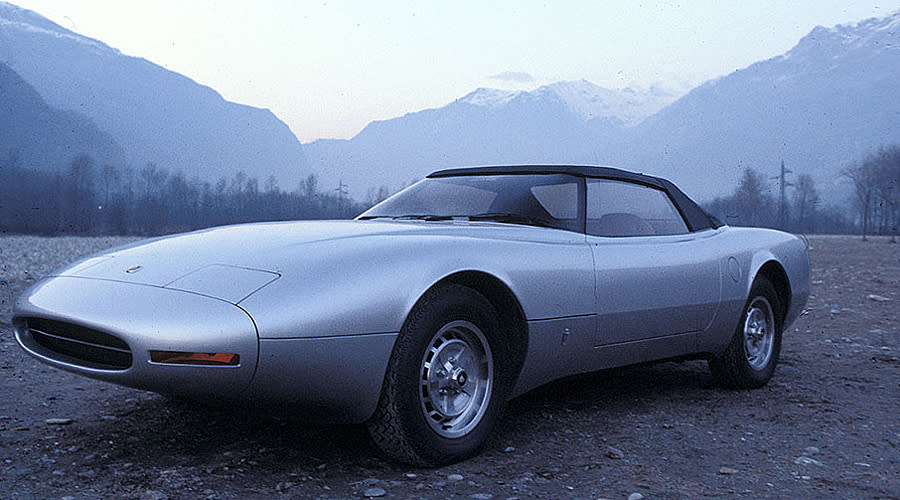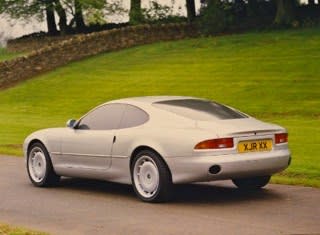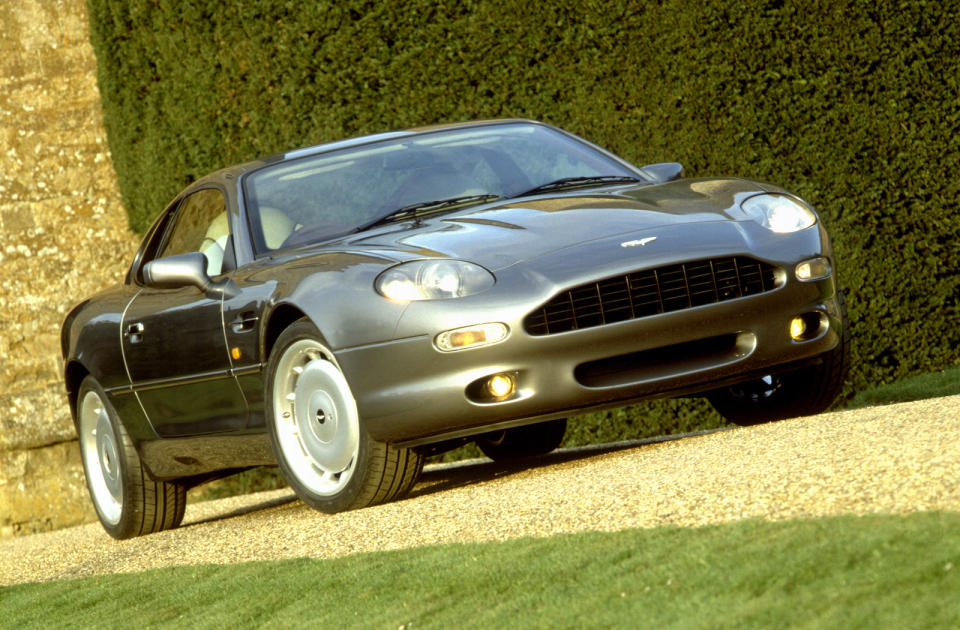The Aston Martin DB7 Evolved From a 1980s Jaguar F-Type That Never Happened

Imagine an alternate universe where Jaguar's long-awaited successor to the E-Type didn't debut in 2012, but way back in 1993. That's actually not hard to do, because the Aston Martin DB7 was very close to becoming the Jaguar F-Type before a corporate shake-up lead to the Ian Callum-designed grand tourer we know today.

I didn't know much about the DB7's origin story, but pictures tweeted out by former Top Gear script editor Richard Porter Thursday morning piqued my interest. The pictures show a styling buck that looked more-or-less like an Aston DB7, but with a front fascia reminiscent of a Jaguar XJ220 and a license plate that reads "XJR XX."

This styling buck was likely created in the early-1990s, but the intertwined history between the DB7 and the F-Type goes back all the way to 1982. That was the year Jaguar decided to replace the decidedly un-sporty XJ-S grand tourer with a true successor to the original E-Type. This new sports car would ride on the XJ40 sedan platform, with the coupe codenamed XJ41 and convertible XJ42.
The styling on this F-Type concept drew from the 1978 Jaguar XJ Spider concept by Pininfarina, and it features element reminiscent of both the XJ-S, and the forthcoming XJ220. The XJ220 resemblance isn't too surprising given that both were penned by Keith Helfet, Jaguar's chief designer at the time.

Jaguar wanted the F-Type to share its AJ6 straight-six with the XJ40 sedan, and early prototypes apparently proved to be quick. The company targeted a debut in 1986, but this date was pushed back as a result of delays in getting the XJ40 to market. The sedan was two years late when it arrived in 1986, and by that point, the sports car world moved on, forcing Jaguar to make heavy revisions on its F-Type prototype.

What was once intended to be a small sports car weighing around 3300 lbs became a twin-turbocharged, all-wheel-drive porker weighing nearly 4000 lbs, with development stretching into the 1990s. Adding to the F-Type's problems, the XJ40 entered the market prematurely, and ended up costing Jaguar a small fortune in warranty repairs. Ultimately, this lead to Jaguar's sale to Ford in 1989, with the cancellation of the F-Type project in 1990.
Under Ford, Jaguar invested heavily in revising the aging XJ-S, which arrived de-hyphened in 1991. All hope wasn't lost for an F-Type, though, as the remnants of the XJ41/42 project were handed over to Jaguar's de-facto factory racing unit, Tom Wakinshaw Racing (TWR), which previously developed the XJ220 and Jag's highly successful Group C race cars.

TWR was tasked with taking the design of the XJ41/42 and adapting it for the revised XJS platform, with a young designer named Ian Callum in charge of the project. The codename for this project was "XX," hence the script on the license plate on the car pictured above. Callum, who's now Jaguar's design chief, recalled this period in an interview with Top Gear.
"The idea was to take the essence of XJ41–a much bigger car don't forget–and place it on an XJS platform," said Callum. "The car evolved to a point as a Jaguar, but met with resistance from the Jag' boys. And I could understand that they felt uncomfortable about an outsider changing their design, because change it I did."

Jaguar once again cancelled its E-Type successor, so TWR went to another one of its clients, Aston Martin, which like Jag, was also owned by Ford. Callum was then tasked with adapting "Project XX's" Jaguar styling cues–which, remember, started as a concept car in the late 1970s–to suit Aston Martin's aesthetic, and the result was the DB7 that debuted in 1993.
"Almost immediately the project took on a more vibrant and freer spirit," said Callum. "All surfaces were changed to accommodate, albeit subtly, the Aston aura."
The DB7 is unmistakably an Aston Martin, but the Jaguar lineage is plain for nearly anyone to see. While the DB7 is arguably more famous for being the first car to house Aston's famous V12, its original engine, a supercharged straight-six, also has some Jaguar blood. TWR took Jag's venerable AJ6 straight-six, which was supposed to go in the XJ41/42, and revised it significantly for usage in the DB7.

Of course, the cross pollination between Jaguar and Aston Martin didn't end there: Using a similar platform to the DB7, Jaguar created its own XJS successor, the XK8. The XK8 debuted in 1996 and unlike the DB7, it used an all-new V8 under the hood.
Ian Callum became design director at Jaguar in 1999, and eventually lead the project to finally bring the long-awaited F-Type to market in 2013.
This history casts the DB7 in a very different light, in a way making it a more compelling car. You could look down on the DB7 for not being a thoroughbred Aston, but you really should give credit for TWR, Ian Callum, and Aston itself for taking ancient design and engineering, and making it great. When it debuted in 1993, the DB7 was exactly the car Aston needed following years of slow sales, and it was a car that helped usher the company into the 21st century.

Without the DB7, there'd be no DB9 or V8 Vantage, and there'd certainly be no DB11. That's mighty impressive for a car with a platform from the 1970s, and styling from the early-1980s.

 Yahoo Autos
Yahoo Autos 